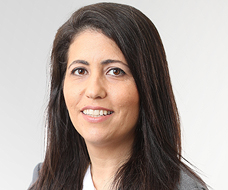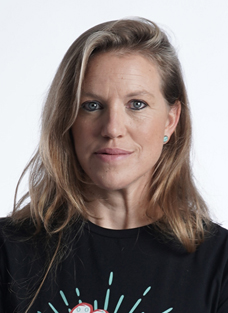What does the hybrid employment model look like?
As Israel goes back to a post-Covid normal, companies must determine how much time employees will spend in the office
It’s pretty clear that we are in the ‘New Normal’ and that it is necessary to adopt a hybrid work model. But what is the meaning of such a model? Does it fit all organizations and all employees? How do you enact such a model in practice, does every employee still get to keep a desk of their own? Will every employee get to determine when and how often to come into the office? How do you retain the advantages of working from home, while taking advantage of the benefits of working alongside each other? How do you make the most out of both worlds?
“Organizations have come to realize that remote work is possible and many of them realize that there is no turning back. Organizations have seen the light. We have reached a point that we thought would take us years to arrive at and to bring everyone back to a five-day workweek from the office is akin to turning out the light. There is a great opportunity now to redefine the workplace,” says Inbal Namir, Managing Director and Head of Knowledge Management Advisory at Deloitte Israel.
 Inbal Namir. Photo: Almog Sogbeker
Inbal Namir. Photo: Almog Sogbeker “The purpose of the office has changed. We arrive there in order to collaborate, share information, and hold hallway discussions,” notes Namir.
While most organizations plan to adopt a hybrid employment model, the model itself is not yet fully formed. According to a Deloitte survey conducted in February, only 10% of organizations won’t allow employees to work from home at all, 19% will allow employees to work one day a week from home, 59% will allow two days a week from home and 13% will give their employees free rein to choose where they want to come into the office. Though there is broad agreement over the adoption of the hybrid model, nearly 70% of organizations have yet to determine the precise ratios.
“Employees are currently in a state of uncertainty and it is important that employers define their policies. If it’s possible to take the flexibility and adapt it to a clear framework, employees will feel more confident. There is a risk of just going with the flow because employees want to know where things are headed,” Namir says.
At Dell Technologies Israel, employees have been working entirely from home since March 2020, but even prior to the Covid-19 outbreak, the company embarked on a plan whereby employees would be monetarily incentivized to work at least one day a week from home. 50% of the employees in Israel chose to register for the hybrid program. “We saw that a significant percentage of the employees wanted to work in a hybrid model of at least one day a week from home. Working remotely is not new to us, our organization has worked in such a way for many years. We still believe that employees should be granted flexibility and choice, subject to their job requirements and their agreement with their direct managers. We have set a goal that 50% of our employees in Israel will work in a hybrid model,” Lior Pony, GM of Dell Israel says.
 Lior Pony. Photo: Ohad Romano
Lior Pony. Photo: Ohad Romano You have been working remotely for more than a year, why go back to the office at all?
“There is no substitute to face-to-face meetings and we don’t believe we can make the transition to 100% work from home. We still serve clients and it’s important to meet with the workers in a physical environment too.”
Software solutions provider Elad Systems had also embarked on a hybrid employment pilot prior to the pandemic, in January 2020, allowing two departments to work one day a week from home and upping it up to two days a week later on. Over the past year, they worked from home and when it was possible they split the week into two or three days at the office and the rest of the time from home. Nowadays they are working one day a week from home with the goal of increasing it to two days further down the line.
“We believe that the hybrid model is critical to maintaining our operations and business success. We manage projects for our clients and it is important for our employees to combine work from home with work from the office. Some employees were disappointed that we went back to work from the office, but we see the advantages of the combination of the two. Unlike other organizations, where people can choose to work from home five days a week, we believe that teamwork is a necessary component of feeling like you’re part of an organization and of our business success,” Inbal Cinman, VP Human Resources at Elad Systems says.
You had already piloted working two days a week from home, why did you go back to one day a week now?
“We believe in taking baby steps and as we shift to one day of work from home, we will finalize our internal preparation work. It is important for us to be a company that measures output and not inputs and to do that requires a team of data networks that will enable us to manage employees without the need for zoom calls at the start and end of the day.”
 Inbal Cinman. Photo: Victor Levi
Inbal Cinman. Photo: Victor Levi At Elad, every department has a set day a week when they work from home. One of the things Cinman said worked well during the pandemic was that people learned how to be very efficient, at the same time, however, they experienced loneliness so returning to work in the office was essential from a mental health perspective.
“This year changed the rules of the game for employees and also for job candidates. Nowadays we are asked in interviews, even for high-ranking positions, whether we work from home or from the office. As a company with tech characteristics it is important for us to stay current in the new work world where it makes no difference where I work from,” she said.
Startup company SQream forced its employees to return to work from the office as soon as the pandemic restrictions allowed it. “The reason we forced people to do it, even though it created some backlash and was a risk on our part, was because we felt we were saving people from themselves. Some of the backlash came from employees complaining about their need for flexibility in order to be efficient, and naturally, we were sensitive to special needs, like in the case of parents to very young children, but we believe that productivity is not the only criteria to measure things by. There is a slot to be said of having fun at the office and some things are simply inconvenient to do from home,” Saray Ben-Meir, chief of staff and head of innovation at SQream said.
She said that people who came in for interviews at the office over the past year asked whether they would be working from home or from the office. Down the line, the company plans to switch to a three days at the office and two days at home schedule. “We never lost the sense of belonging and the direct connection to the office. After a year in which we never all met together and during which our team grew dramatically, the thought of being together is exhilarating but also slightly concerning. We have grown so used to maintaining a social distance and keeping “air” between us. Thankfully, over the last month, as part of our “airy” return to routine, we’ve also increased our office space,” added Ben-Meir. “We decided on one day a week that everyone has to come into the office and let our employees choose which day of the week it would be. Surprisingly they chose for it to be on Thursdays, the day that we traditionally hold our weekly “happy hour’ which signified to us that they wanted to keep up the tradition. For safety sake, we plan to hold the happy hour in several locations at the office in order to spread things out and keep things comfortable.”
 Saray Ben Ari. Photo: SQream
Saray Ben Ari. Photo: SQream One of the things that employees are concerned about in returning to work from the office is their desk space. Most organizations have elected to use a ‘hot desk’ system in order to save on office space, but these two have to be managed to ensure team members can sit in proximity to one another.
At fintech company Finastra, where people are working at least two days a week from the office, this was solved by using an app to manage clusters of hot desks. “There is an app we used to map out the office according to clusters, so that you may not have a saved desk space, but you’ll still sit next to your friends or team members. This introduced the requirement to keep desks clear of personal possessions, so no personal trinkets or family photos, though employees can keep their keyboard and mouse in a dedicated drawer,” said Roni Abramovich, HRVP at Finastra. “The feedback taught us that people are very attached to their chairs.”
The company currently works in a hybrid model, with 30% of the team present on any given day. “The managers decided on the days that their team would come into the office. We discovered that Thursdays and Sundays are the days people prefer not to come in on. A big part of managing a flexible work model is leaving decisions up to individual managers. On a corporate level, we will have to prepare for it and make sure that not everybody chooses to come in Mondays to Wednesdays,” she says.



